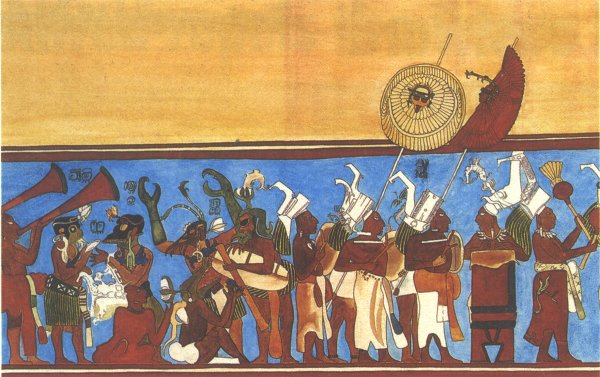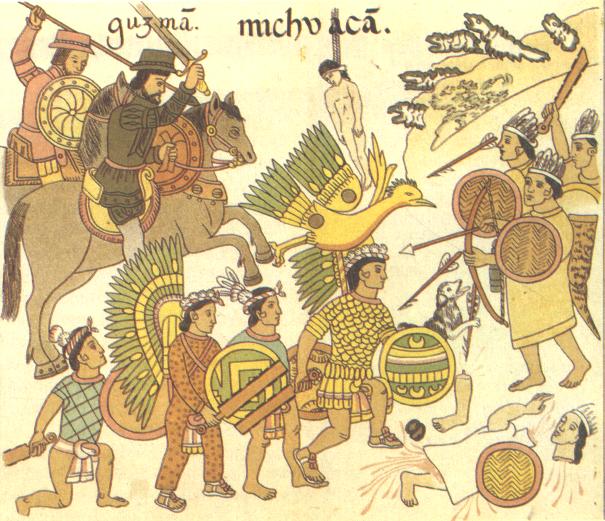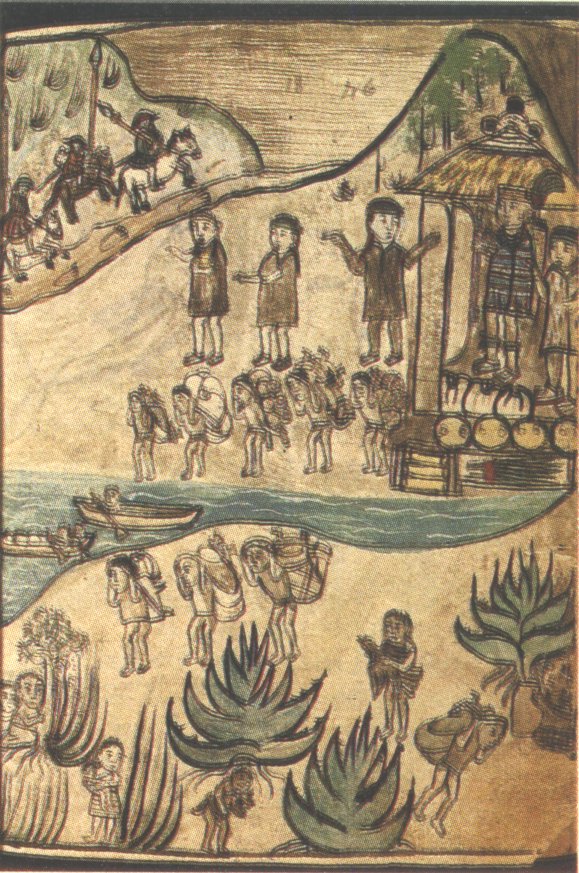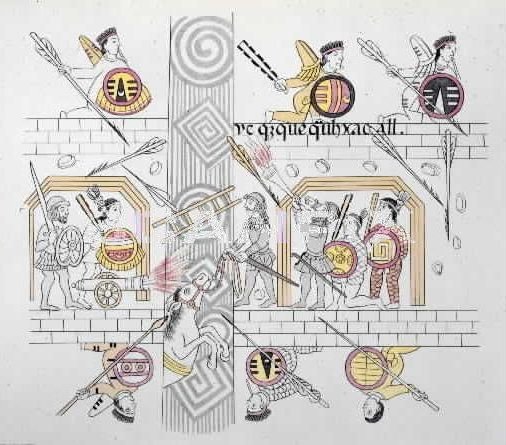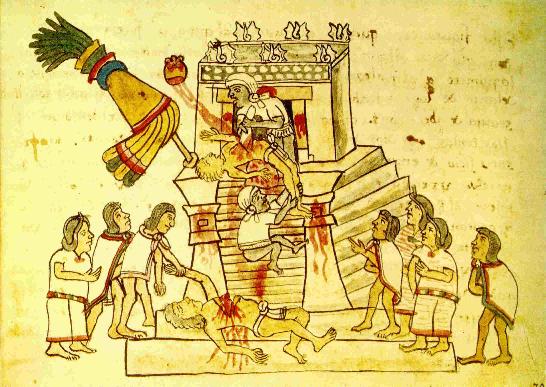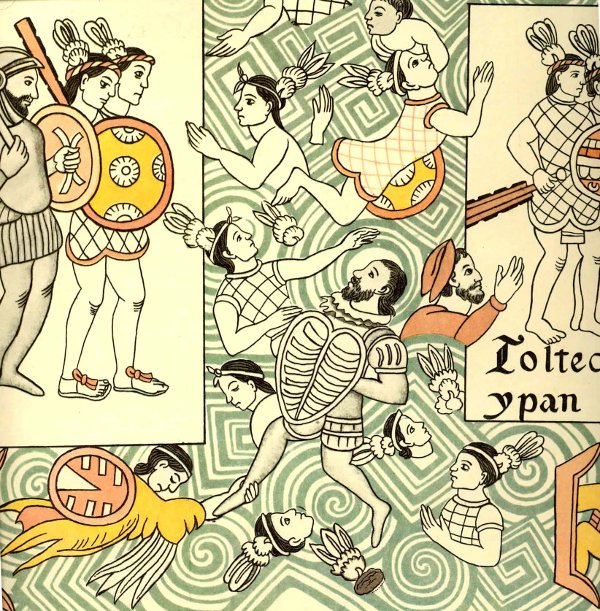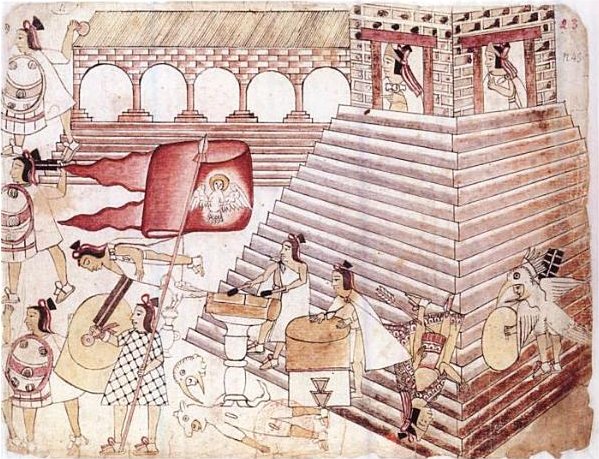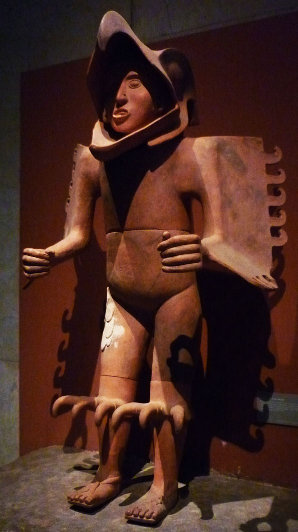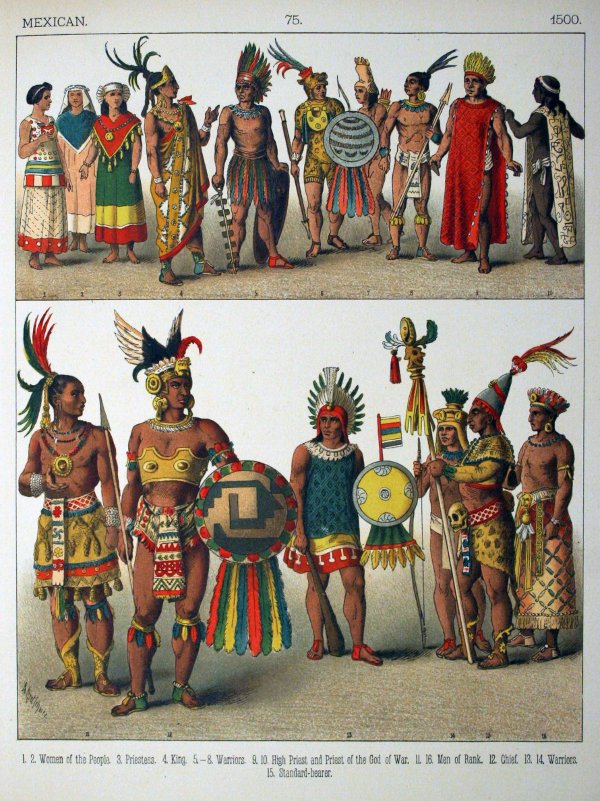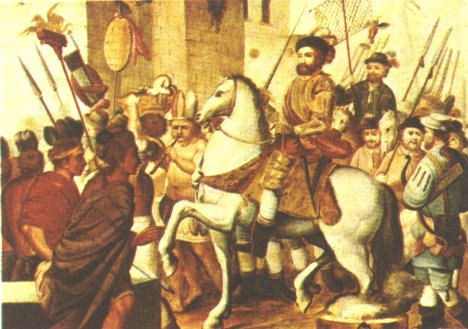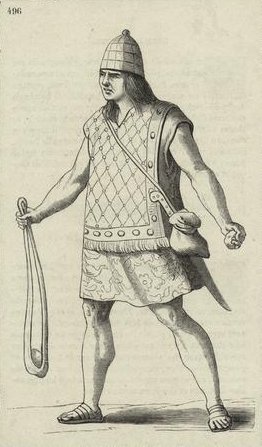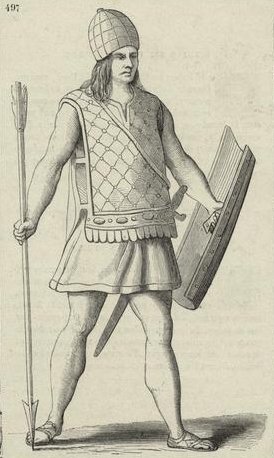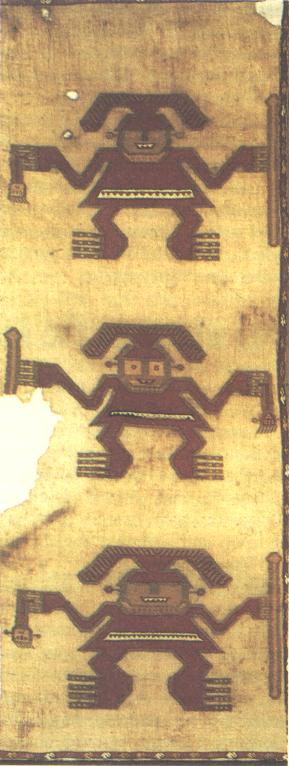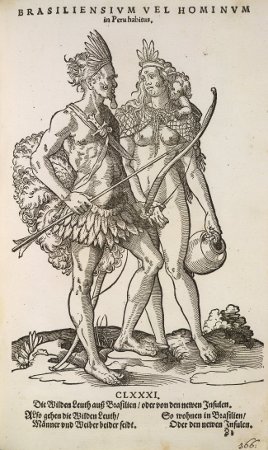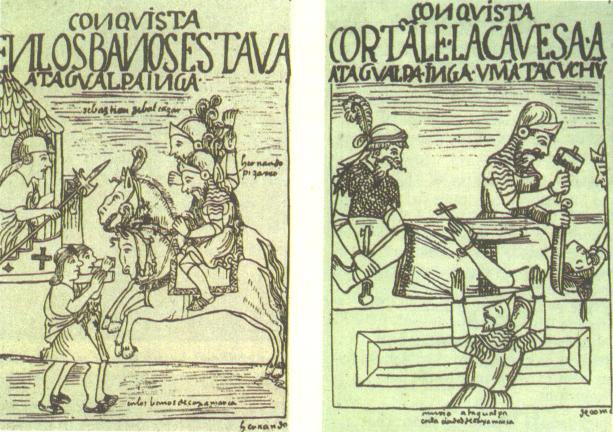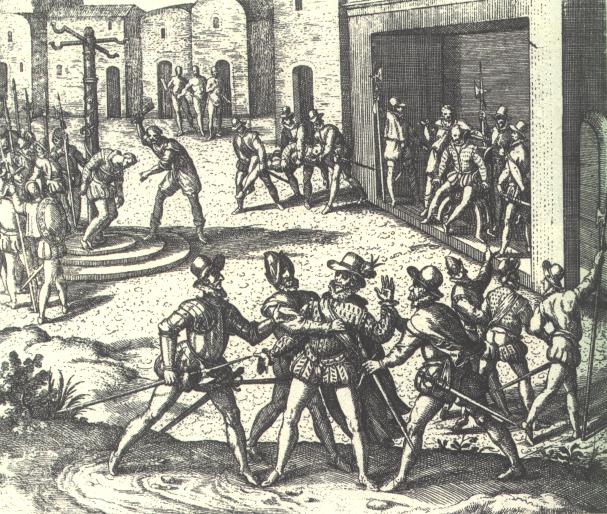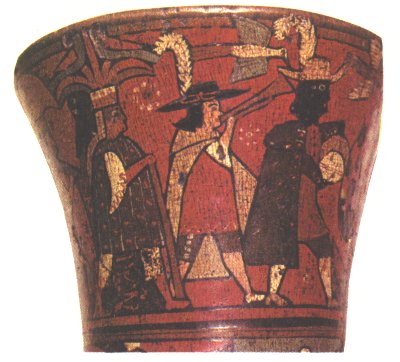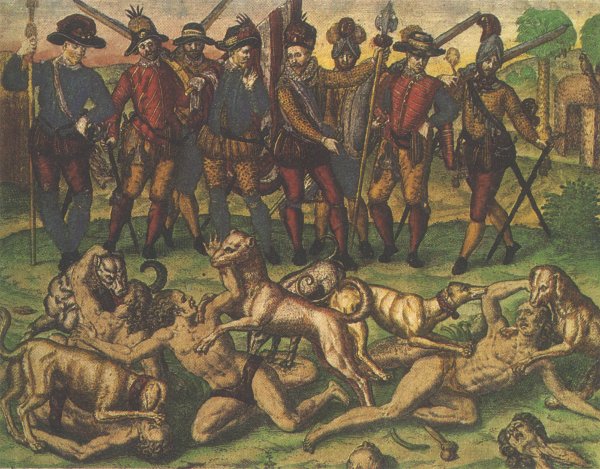Aztecs, Incas and Spaniardsfrom contemporary pictures |
Copy of a fresco originally from a Zapotec temple in southern Mexico.
(p318, Chronicle of the World, Editor: Jerome Burne)
A bloody scene as the Spaniards go into action against Montezuma's people.
(p.469, Chronicle of the World, Editor: Jerome Burne)
Mexican natives flee from the Spanish; from a contemporary drawing.
(p.507, Chronicle of the World, Editor: Jerome Burne)
The new assault on Tenochtitlan started in December 1520. Throughout the following spring, the Aztecs fought from behind barricaded, from roof tops, and canoes in the narrow canals, continually trapping the Spaniards and inflicting devastating casualties. The siege became a war of attrition. (Lienzo de Tlaxcala, The British Library)
Aztec Human Sacrifice from the Codex Magliabechiano (p.199, The Atlas Of Medieval Man by Colin Platt)
The fighting was vicious but the Spaniards kept moving forward until they reached the Tolteca canal where the chasm was too wide to cross. (Lienzo de Tlaxcala)
Mexican Warriors Defending The Great Temple - Codex Azcatitlan - plate 24
Large ceramic statue of an Aztec eagle warrior exhibited at the Museo Nacional de Antropología e Historia, México
1. 2. Women of the People. 3. Priestess. 4. King. 5.-8. Warriors. 9. 10. High Priest and Priest of the God of War. 11. 16. Men of Rank 12. Chief. 13. 14. Warriors. 15. Standard-bearer
The conquest of America by Europeans in the 16th century meant that the indigenous cultures were almost wiped out, Because of the Spaniards' desire to convert the Amerindians to Christianity, the traditional features of the native way of life were absorbed into the dominant culture, although this process was uneven. The tribes that survived were the most primitive and they never developed, but the civilization of the Aztecs and Incas wholly disappeared. (p.37 The Ages of Discovery, Editor: James Mitchell)
Peruvian Slinger and Peruvian Soldier, from Costumes anciens et modernes : habiti antichi e moderni di tutto il mondo, by Cesare Vecellio, 1590.
Published: Firmin Didot, Paris, 1859-1860.
Warriors, from a Peruvian cloth.
(p.473, Chronicle of the World, Editor: Jerome Burne)
Brazilian couple with an infant in Peru
from: Habitvs Praecipvorvm Popvlorvm, tam virorvm qvam foeminarum Singulari arte depicti.
(The habits of the principal peoples, both men and women represented in special art.)
by Hans Weigel, 1577, Nuremberg. Source: British Library.
These sketches by Felipe Guaman Poma de Ayala from El primer nueva corónica y buen gobierno show the cruelty of the conquistadores.
On the right, they are seen executing the Inca emperor Atahualpa.
(p.485, Chronicle of the World, Editor: Jerome Burne)
Diego de Almagro is garrotted and decapitated by Peru's governor Pizarro.
(p.494, Chronicle of the World, Editor: Jerome Burne)
This 17th-century Inca wooden beaker shows Peruvian Indians and a European together. At first, the Spaniards tried to preserve the Indian social structure, using local chieftains as Justices and tax collectors. However, over the course of the 17th century, the native nobility intermarried and the Spaniards took Indian women as concubines, producing a mixed group known as mestizos. The Indian culture declined and was supplanted by that of a white, or near-white society. (p37 The Ages of Discovery, Editor: James Mitchell)
Spanish cruelty towards the Indians was notorious. Brief Relation of the Destructions of the Indies by Bartolomé de las Casas, which became a best-seller during the 16th century, helped to foster and disseminate this "black legend". Its popularity, however, was due more to fear and hatred of Spain than to love of the Indians. This illustration by De Bry appeared in The Netherlands as anti-Spanish propaganda.
(p.574, Chronicle of the World, Editor: Jerome Burne)
|
See also: A list by province of the tribute due to the Aztecs including pictures of the feathered war suits included; by Chronofus. Aztec Shields; by Chronofus. Inca flags, standards and banners by John Garvey. Inca warriors and costumes by John Garvey. Inca litters by John Garvey. El primer nueva corónica y buen gobierno by Felipe Guaman Poma de Ayala. 'The Spanish' by George Gush Conquistador Clothing at the NPS Other Spanish & North African Illustrations of Costume and Soldiers |
Index of Illustrations of Costume & Soldiers
